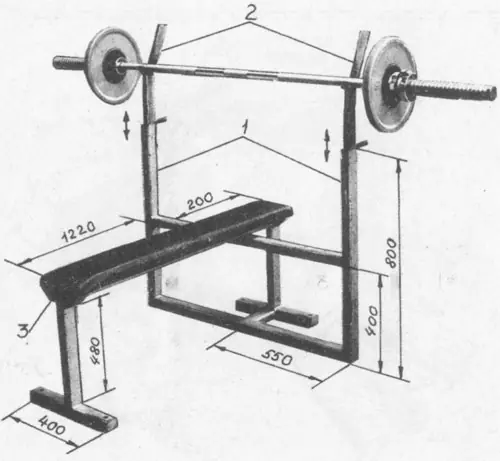The bench press machine is designed for comprehensive elaboration infant, triceps (arm extensors), as well as the frontal region of the deltoid muscles (anterior bundles).
Bench press machine. Structural diagram.
The bench press machine consists of vertical height-adjustable racks (1) with grips (2) for the barbell and bench (3).
The optimal distance between the racks, meeting the requirements of convenience and safety (tipping of the rod is excluded), is 1100 millimeters, although other options are possible.
The bench press machine, in addition to its main, immediate task, makes it possible to perform the following exercises:
- in a lying position, abducting the barbell (dumbbells) behind the head;
- French bench press;
- bench press (dumbbells) from the chest, from the shoulders (from behind the head);
- in a lying position across the bench with a barbell (dumbbells) behind your head.
...and this is not a complete list of available options for its use.
As you can see, the bench press machine is practically indispensable nothing tool in building your body. It is not without reason that at the inception of bodybuilding, when exercise equipment had not yet been invented, it was the barbell, rack and bench that worked out 100% of what the exercise equipment is now unable to do. No matter how many new variations appear, the good old grandfather’s method is alive and well and has no intention of retiring. There is probably not a single bodybuilder in the world who would not use this time-tested combination in his training!
Another significant plus is availability. I hope you have already read our article about how you can replace the counter and bench with improvised home furniture. If you haven’t yet, be sure to read it, you will find a lot of useful information from the personal, life experience of one of our regular authors. He will kindly share with you his little secrets, without which barbell training at home may seem problematic, and perhaps not at all unreal...
Post Views: 121


